State rests case after Atatiana Jefferson’s sister testifies in Aaron Dean murder trial
Atatiana Jefferson’s sister Ashley Carr was the last prosecution witness to testify as the murder trial of former Fort Worth police officer Aaron Dean continued Wednesday,
The state rested its case Wednesday afternoon after Carr’s testimony. The trial will resume Monday, when witnesses for the defense will be available to testify.
Carr said that Jefferson, 28, was the youngest of four siblings. Her voice broke as she saw photos of her sister that the prosecution showed in the courtroom. The photos included Jefferson on a family trip to San Diego to visit their brother stationed there with the Navy, her graduation from Xavier University, and her with nephew Zion, who saw his aunt shot to death when he was 8 years old.
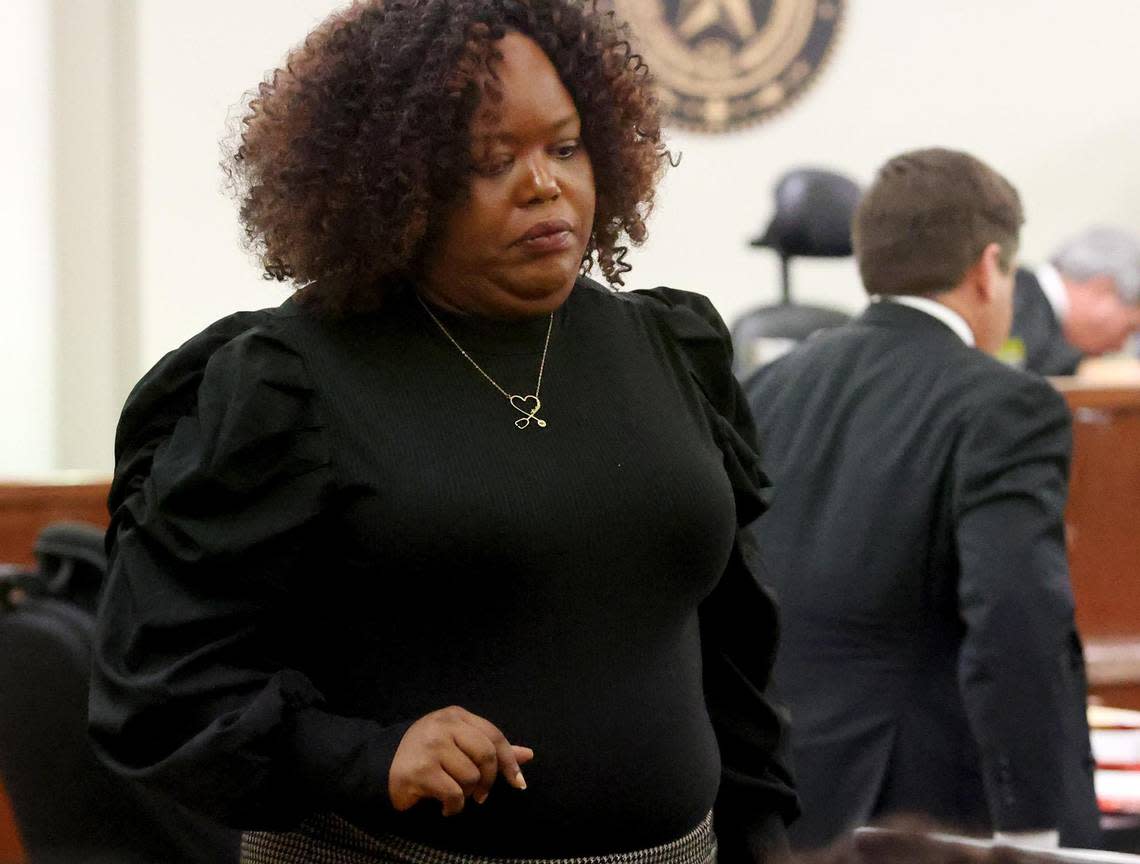
Ashley Carr said Jefferson moved in with their mother, Yolanda Carr, on East Allen Avenue in Fort Worth when Yolanda became ill.
She said Jefferson, who the family called “Tay,” wanted to take care of their mother and also save money for medical school. She planned to become a doctor. Carr said Jefferson wanted to find a cure for diabetes, a disease she’d had since childhood. She was helping to raise Zion while his mother, Amber Carr, was also in the hospital.

The defense objected to the relevance of some of the personal questions and the judge told the prosecution to move on. Assistant Criminal District Attorney Ashlea Deener then asked Ashley Carr about their mother’s neighborhood, where Dean shot Jefferson through her bedroom window while responding to a neighbor’s call about open doors at the house on Oct. 12, 2019. The defense has emphasized that police consider the neighborhood part of a high-crime area.
Ashley Carr said her mother would leave the side door of her house — the door the family mainly used — unlocked. It was a “you just pull up and come in” type of house, she said. She testified for about 10 minutes.
The defense is trying to prove Dean saw Jefferson point a handgun at him through the window and that he shot her in self-defense. The prosecutors have said they don’t believe Dean ever saw the gun.
The prosecution did not call any of the use-of-force experts that were on its list of potential witnesses. Prosecutors could still call more witnesses later as a rebuttal to the defense’s case.
The defense is expected to present a day or two of witness testimony.
Wednesday began with the testimony of crime-scene investigators and a Major Case detective who responded to the scene of Jefferson’s shooting. Jurors also heard from a paramedic who tried to save Jefferson and the medical examiner who performed her autopsy.
Crime-scene technician James Van Gorkom discussed photos and an interactive virtual 3D scan taken of the inside and outside of the house about two-and-a-half hours after Dean shot Jefferson.
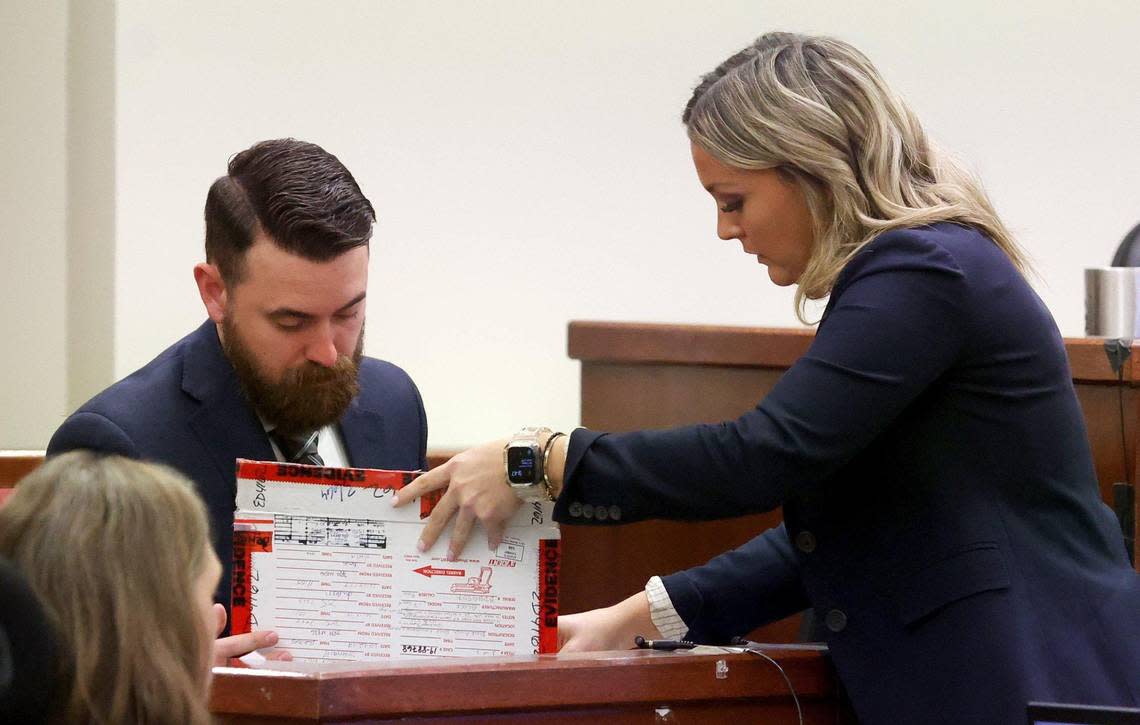
Van Gorkom said the primary purpose of the photos and the scan is to document the scene.
Deener, the prosecutor, asked Van Gorkom if he could tell the difference between a messy house and a ransacked house.
“That’s hard to answer,” Van Gorkom responded.
Officer Carol Darch, who responded to the house with Dean the night of the shooting, testified Tuesday that they mistakenly thought the house had been burglarized when they saw cabinets open and things strewn about like they had been taken out of drawers. The front and side doors of the house were open but the glass storm doors were closed, and the officers did not see signs of forced entry, Darch testified.
Deener asked Van Gorkom if a firearm is considered a deadly weapon, and he said yes. Then Deener asked if shooting a bullet through a window is an act considered “dangerous to human life,” and Van Gorkom said yes.
Defense attorney Miles Brissette countered by asking Van Gorkom if pointing a loaded firearm at a police officer is considered an aggravated assault, which is a felony in the state of Texas. Van Gorkom said yes.
Major Case Detective Doug Rohloff, who collected Dean’s gun for evidence after the shooting, testified that Dean was issued another weapon that night. The personal flashlight attachment Dean had mounted on the weapon used in the shooting was returned to him.
Rohloff explained that any time an officer fires their gun in a shooting, the weapon is collected for evidence and an identical weapon is issued to the officer.
“We do not leave our officers unarmed,” he said.
Dean resigned from the Fort Worth Police Department two days later on Oct. 14, 2019, and he was arrested that night.
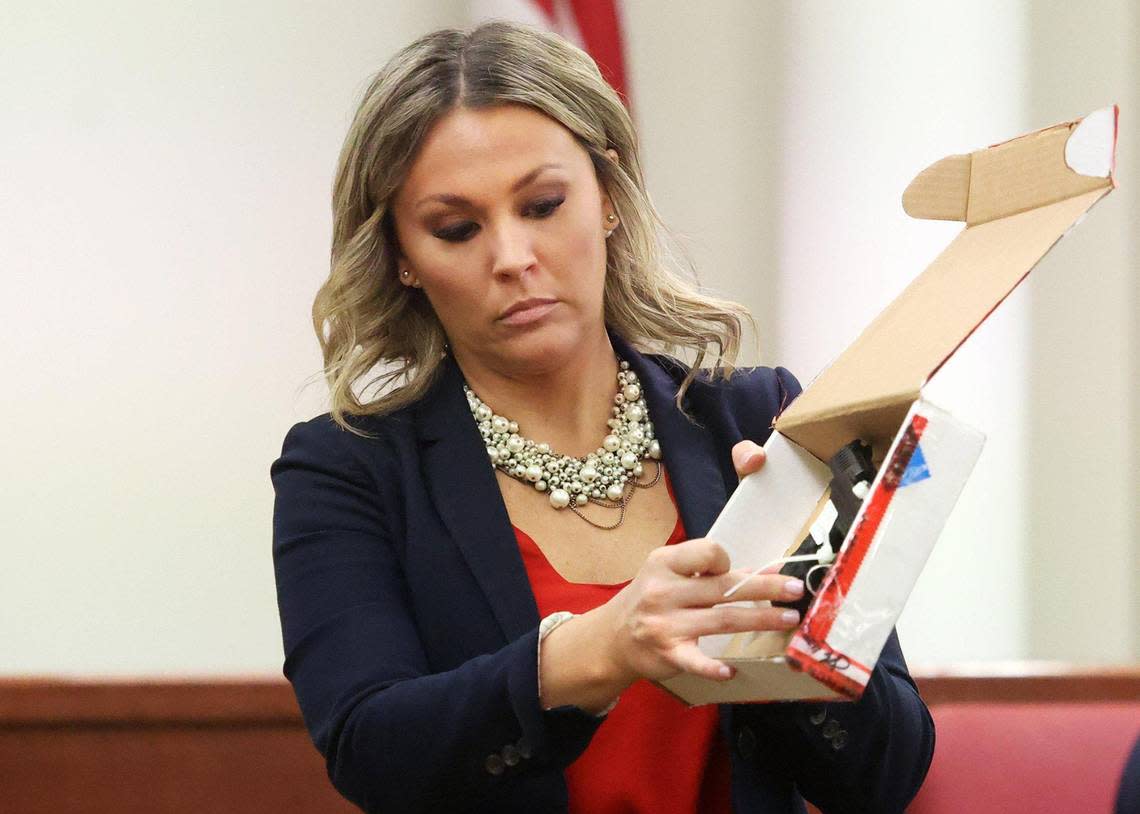
Officer T. Valderas, the lead crime-scene officer on the scene, also testified. He took photos and collected evidence right after the shooting. Brissette cross-examined him to establish whether or not evidence was collected correctly.
Brissette noted that according to general orders, a drawing of the crime scene is supposed to be completed within 15 days. Valderas admitted there was no drawing of the crime scene done. Brissette said that was another instance in which general orders were not followed.
Darch testified Tuesday that she and Dean did not guard the open doors when they arrived at the house, which is contrary to the Fort Worth Police Department’s general orders for an open structure call.
Valderas collected Jefferson’s handgun from the house and he said he had a hard time turning off the laser sight, and he remembered the laser was green. The defense has said Dean saw the green laser pointed at him.
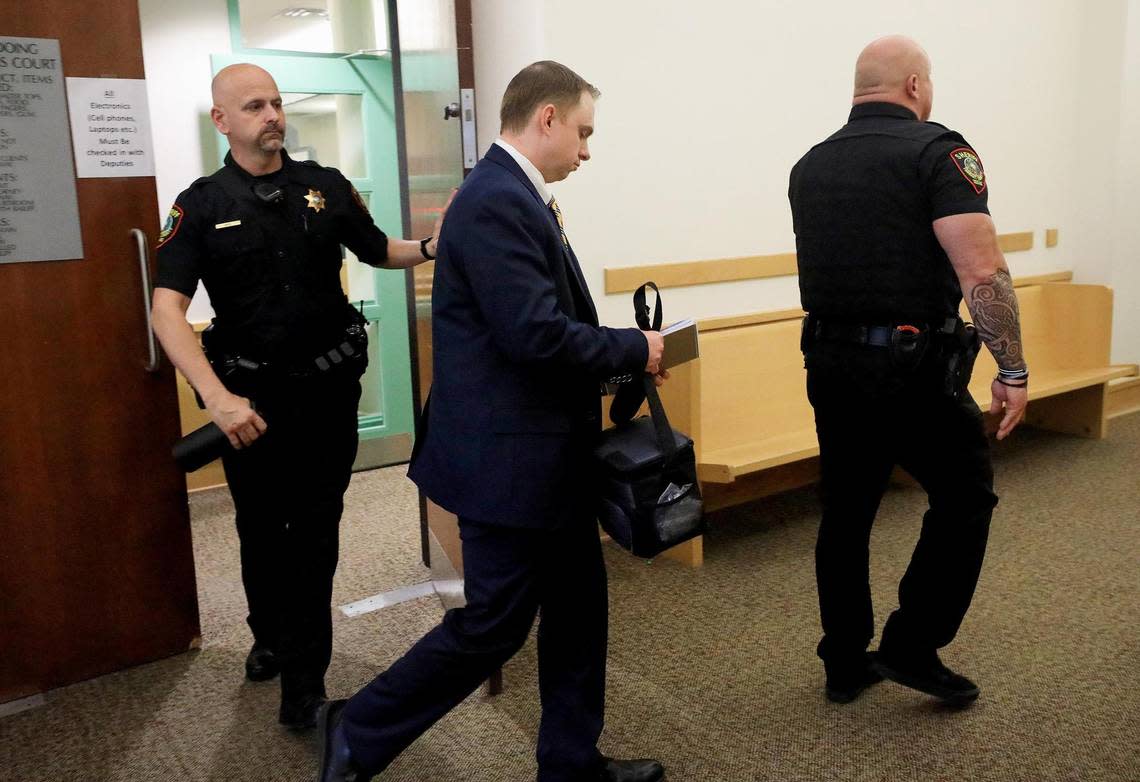
Francisco Chairez, the paramedic who responded to the shooting, testified that someone from the Fort Worth Fire Department was already performing chest compressions on Jefferson when he arrived.
Chairez continued the chest compressions and other life-saving measures. Chairez also said he inserted a needle under Jefferson’s ribs to help relieve pressure to help her heart beat “appropriately.” Some blood came out of the needle, which Chairez said meant blood was trapped in the chest cavity and putting pressure around the heart.
Chairez said he continued life-saving procedures on Jefferson for 20 minutes, but there wasn’t any change in her condition.
“At that point there’s nothing we can do,” he said.
Richard Fries, the deputy medical examiner who performed the autopsy on Jefferson the day following her death, described the wound that Jefferson had suffered and the path of the bullet. Prosecutors displayed photos from the autopsy, which also showed glass fragments from the window that pierced Jefferson’s face and chest.
Fries said the official cause of death was a gunshot wound to the torso. The manner of death was ruled a homicide.
When defense attorney Bob Gill asked if homicide was the same as murder, Fries said no, and that the medical examiner’s office does not make a determination of murder, which is a legal term.
Prosecutor Dale Smith asked Fries if it would have been possible for Jefferson to survive the gunshot wound.
“These are very devastating wounds,” Fries replied. “I wouldn’t expect anyone to survive them.”
He said the bullet hit Jefferson’s left upper chest and traveled downward and to the right. There was no exit wound and he removed the bullet from her right lower back.
The defense questioned Fries about the path of the bullet and how Jefferson was standing and he said he could not determine exactly how she was standing but that she could have been leaning forward and turned slightly to the side, rather than facing the officer directly when he fired the gun. He couldn’t answer how close she was standing to the window.
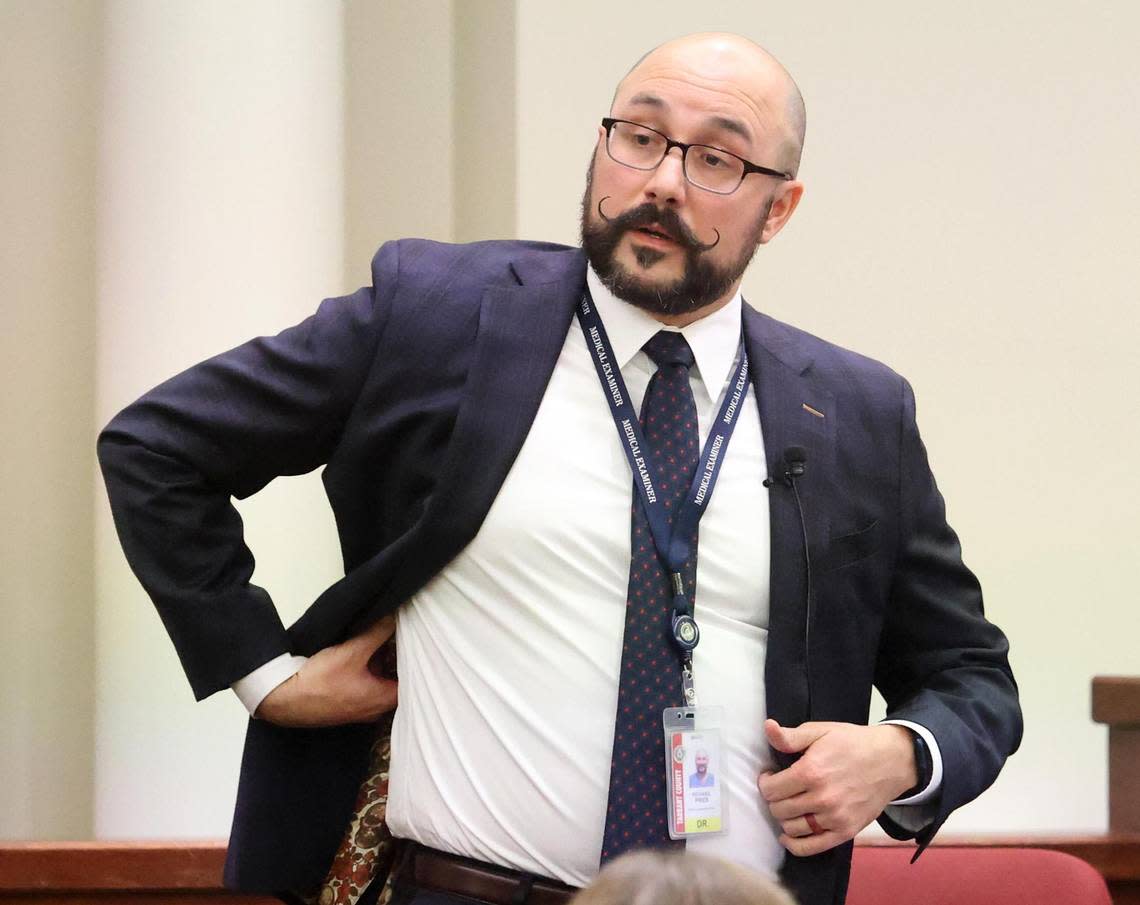
The paramedic testified that as they worked to try to save Jefferson, she never had a pulse and never breathed on her own. Fries said that did not surprise him.
But she did not die immediately, he said. Her cries and groans could be heard on Dean’s body-camera video, which the jury watched on Tuesday.
In the bodycam video, Dean shouts, “Put your hands up! Show me your hands!” and then immediately fires one shot. Prosecutors say he didn’t identify himself as an officer, never mentioned seeing a gun, and did not perform any first aid to try to save Jefferson’s life.
On Monday, Jefferson’s nephew Zion Carr, who was the only witness inside the house, testified. He said that he and his aunt opened the doors to let out smoke after burning hamburgers. He said they were playing video games when Jefferson heard noises in the back yard, grabbed her handgun from her purse and looked out the window.
On Monday, Zion said Jefferson held the gun down by her side and that he didn’t see the officers in the yard. On Tuesday, the attorneys played video of Zion’s conversation with a forensic interviewer recorded about two hours after the shooting. In the video, Zion said Jefferson pointed the gun at the window and that he saw Dean’s badge, gun and flashlight through the window.
Jefferson bled to death and it’s unlikely she would have survived even if she had gotten immediate care at a hospital trauma center, Fries said. The bullet hit her heart, liver and kidney.
“This was a lethal wound,” he said.
